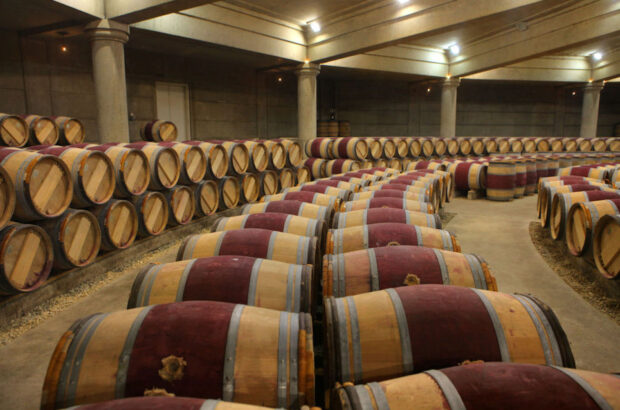See both sides of the debate regarding the way in which Bordeaux en primeur wine samples are selected and tasted by the experts, as featured as the 'burning question' in Decanter's August 2013 issue...
Critics assuming that this year’s Bordeaux en primeur samples are the final blend were in dismay after a consultant said he has a technique to speed up maturation.
The issue of Bordeaux en primeur samples and the way they are selected caused a storm earlier this year. The wine consultant Stéphane Derenoncourt told Le Monde that he takes small portions of each parcel and ‘puts them through a special process to speed up the élévage [maturation]’. This worried critics, who tend to assume the samples they taste during en primeur week in April are the final blend, even though many properties don’t blend their wine until just before bottling – more than a year later. In that case, the samples that they show are representational of the final blend, and not the actual blend.
Henri Lurton at Château Brane Cantenac blends in February, two months before en primeur, while Philippe Magrez waits until bottling. It is normal to select samples from barrels which are showing best vintners say.
Fabrice Dubourdieu, who works with his father Denis in Cadillac, Graves and Sauternes, said: ‘New oak gives a more advanced picture of the wine than second- or third-use oak.’ So the tasting samples of Dubourdieu en primeur wines will have a higher proportion of new oak ageing than the final blend.
Magrez, of the Bernard Magrez group, said that different barrels from different coopers age differently. ‘In the first three or four months, one cooper may be impossible to taste, and some are ready after seven or eight months. So [for en primeur samples] we may blend less from one cooper than from another. But we try to get as close as possible to the final blend. To take only the best barrels would be risky – the final wine will be very different after 12 months.’
No
In eight years of tasting both en primeur and then in bottle, Gavin Quinney of Château Bauduc in Entre-deux-Mers said that he ‘rarely found inconsistencies between sample and bottled wine’, and that any found would be due to the ageing process, and not any deliberate deception by the vintner. However, he did say that many properties blend just before bottling, so the sample is only representative of the blend. While baulking at regulation, he would like to see self-policing, whereby sample bottles have stickers saying either ‘Guaranteed final blend’ or ‘Representative of final blend’.
At Château Giscours, which uses nine coopers and vinifies 69 ‘microcuvées’ individually, ageing them in 1,200 barrels to produce different cuvées for selected tasters would be logistically impossible, said managing director Alexander van Beek. Over multiple tasting sessions, those 69 parcels are whittled down to four barrels of wine ‘which best represent our philosophy, the vintage and the terroir’.
Yes
Robust exchanges on Twitter had Slate.com’s Mike Steinberger, who blogs as Winediarist, describing en primeur as ‘a charade’. ‘It has been apparent for years that the people who profit most by this process are the producers and speculators,’ he said. ‘It is a charade (and a joke, to taste these wines so young).’ Others, such as Liv-ex chief James Miles, said there is so much money a stake that extra scrutiny ‘would be a good step. I’d advocate for all samples to be certified independently.’
Stephen Brook, an opponent of barrel-tasting, told Decanter: ‘Samples at en primeur should be regarded with caution. There is no control over [their] integrity. Most producers try to assemble something representative of the final blend, but there is nothing to stop a cellarmaster choosing a new rather than older barrel, or adding more Merlot to soften the austerity of a young Cabernet.’
Written by Decanter







